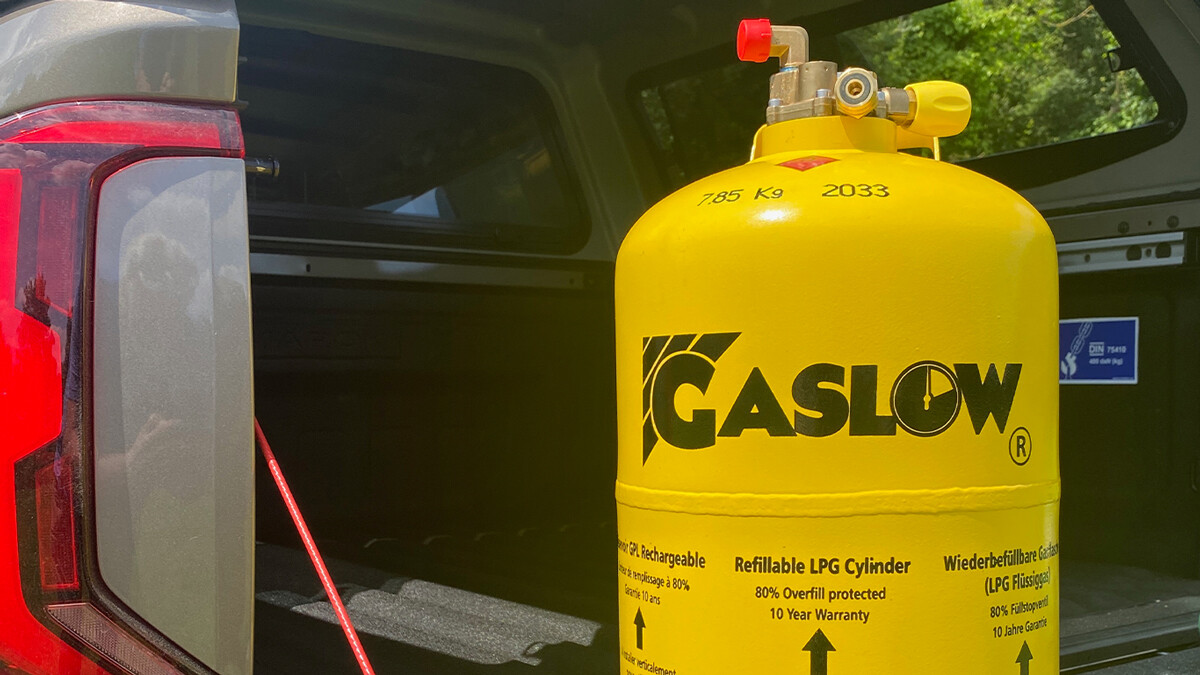No matter which country you call home, if you have any kind of gas appliances installed in your vehicle or trailer, you will most likely rely upon either gas bottles or an LPG tank to fuel them.
If you belong to those that carry one or more gas bottles, then travelling abroad can present you with a headache when it comes to replenishing them. Almost every country has its preferred system and compatibility with others isn’t a priority. Consequently, getting a replacement or refill isn’t an easy task.
LPG tank owners, on the other hand, can refuel at countless service stations.
MY STORY SO FAR
Unlike my VW T3, which I sold many moons ago, my Land Rover isn’t equipped with a built-in LPG tank and I certainly don’t have the space, or inclination, to carry several 11-kilogram bottles on a long trip.
I’m not too fussed about cold weather because I have a really good Sea to Summit sleeping bag that can easily cope with extreme minus temperatures. I haven’t missed a heater in years. After all, if it does get too cold, I can use an electric heater powered by the leisure battery, resort to a candle and clay flowerpot, or drive to warmer climes.
When it comes to cooking, I see a lot of merit in being able to pull over and quickly rustle up a warm meal, or just brew a cup of coffee or tea, on a gas stove. For years, my go-to solution is my trusted Svea stove made almost completely from brass. It fits well with my minimalistic approach and I love its classic style and heritage. But even that entails carrying enough of the right spirit.
A gas stove (and I have collected several) is only good, if you have gas. It’s quick, clean, and simply effective. But the thought of running out of gas means that I don’t use any of them nearly enough, except maybe for my Optimus multi-fuel stove which, as the name implies, runs on gas and almost everything else (including petrol).
Hot shower anyone? Or even just hot water. Unless you have a heat exchanger on your engine, you can choose a gas-fired boiler or a shower unit (such as Arma). But they, too, are appliances that need gas and add to the overall consumption. More reasons why I haven’t used them in the past.
TIME FOR AN UPGRADE
Things have changed recently. At the end of 2023, I saw an ad for a bright yellow Gaslow-branded gas bottle that held a lot of promise. Yes, it’s a portable gas bottle, made in the U.K., but it comes with all the benefits normally associated with LPG tanks. Its singularly most significant selling point is that they can safely be refilled at any one of the numerous service stations almost anywhere across Europe, because Gaslow provide the necessary adapters—just as if you were driving an LPG car.
I thought about it briefly and dived in. Now, I have a 6-kilogram bottle that resides in an easily accessible Zarges box on the roof and I have a powerful stove. If Tristan is travelling with me in his car, then he is even more likely to pack his Arma shower.
The Gaslow bottle is CE marked and approved for it’s described use. The one regulation you need to abide by is that it must be secured to the vehicle for refilling (for example, with a ratchet strap). You don’t want it falling over and service station attendants are rightfully quite sensitive in this respect.
As far as the legality is concerned, a speech held by Jens Pillat, a test engineer assigned by the TÜV in Thüringen, in regard to refillable cylinders/bottles in vehicles, was published as a video on YouTube on October 31st, 2023. If you want to skip the preamble, start listening from marker 29:53. In summary, refillable cylinders/bottles that are not permanently fixed to a vehicle are permissible. The speech is held in German.
THE RANGE
- Gaslow bottles come in three sizes: 2.7 kg,* 6 kg, and 11 kg.
- Adapters are available for all popular European nozzles.
- All bottles are 80% overfill protected.
- Prices range between £180 and £430 (€299 and €370) depending upon configuration and local availability.
*At the time of writing, the 2.7 kg was not CE approved.

RUNNING COSTS
Using my 6-kilogram bottle and prices at the time of writing as an example, the initial outlay for the bottle is €337.19. It comes with a 10-year warranty and holds around 11.3 litres of gas.
The cost of a standard 5-kilogram propane bottle lies between €30 and €45 for purchase, or €20 to €35 for rent.
LPG (in Germany) costs between €0.79 and €0.99 per litre or, €8.92 and €11.19 per refill.
In comparison, the cost of a refill at popular DIY sheds and camping outlets ranges anywhere between €13.10 and €15.90.
Throw into the equation that the Gaslow bottle can be refilled across Europe at all hours whilst travelling, then it is a viable solution which will save money on refills in the long term.
An overview of LPG prices across Europe can be found here.
CONCLUSION
What’s not to like about the Gaslow cylinders?
- The bottle and adapters are well manufactured.
- The gauge informs me reliably how much is in the tank.
- I don’t have to worry about a refill—even after normal working hours.
- I can top up the bottle for reassurance and maximum capacity when I go off grid.
- Gaslow cylinders can replace existing bottles and are easy to install.
Yes, you need to buy your own bottle, but the cost is a worthwhile investment in vastly improved flexibility, ongoing savings, and peace of mind.
I keep saying I can fill up the bottle “almost” anywhere. As far as I am aware, you cannot refill LPG tanks in Iceland, and you cannot board the ferries with full gas tanks or bottles, so make the necessary preparations before you leave home.




